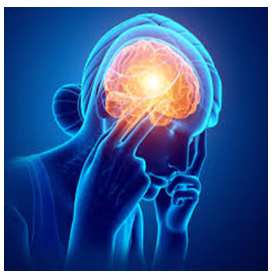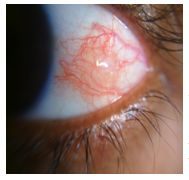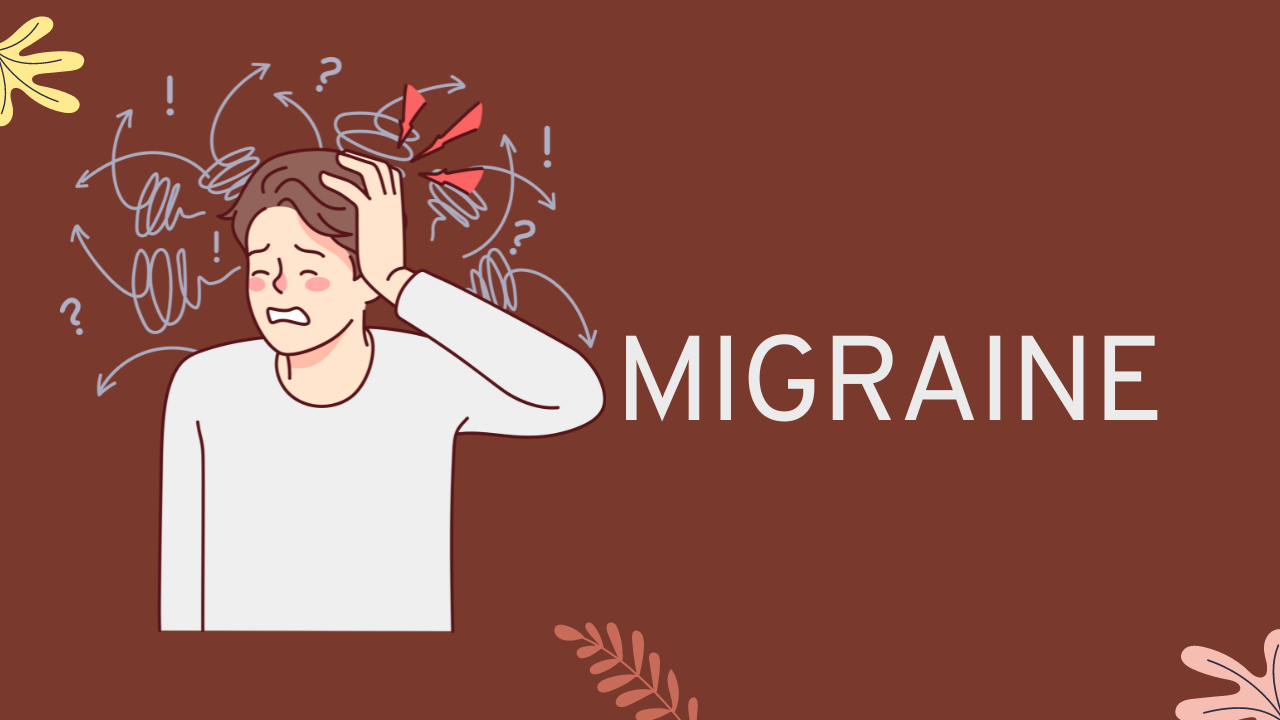MIGRAINE
MIGRAINE

Migraine is a chronic neurological condition that affects millions of people worldwide. In the United States alone, an estimated 39 million individuals suffer from migraines. It’s essential to distinguish between a typical headache and a migraine, as they are distinct ailments with differing symptoms and impacts on daily life.
While both migraines and headaches involve head pain, migraines are characterized by episodic attacks that can significantly disrupt daily routines. Migraines can affect various aspects of life, including work, school, and decision-making abilities. Unlike headaches, which can arise from various causes such as stress, lack of rest, or fever, migraines are often accompanied by additional symptoms such as nausea, sensitivity to light and sound, and visual disturbances.
One of the most common symptoms of a migraine is a severe headache. However, it’s crucial to recognize that migraines go beyond mere head pain. They can affect an individual’s ability to function normally, leading to mood swings, irritability, and a desire to be alone. The impact of migraines extends to daily routines, disrupting schedules, work patterns, and educational pursuits.
For students, migraines can be particularly challenging as they interfere with concentration and study habits. Teenagers may experience hormonal imbalances that exacerbate migraine symptoms, making it difficult to focus on academic tasks. This can ultimately affect their educational performance and overall well-being.

Managing migraines involves understanding triggers, seeking appropriate medical treatment, and making lifestyle adjustments to reduce their frequency and severity. By recognizing the distinct nature of migraines and their impact on daily life, individuals can take proactive steps to mitigate their effects and improve overall quality of life. Migraine not only affects individuals on a physical level but also has significant repercussions on their professional and personal lives. For those in
high-pressure careers or pursuing advanced degrees like MBA students aiming for top positions in multinational companies, the impact of migraines can be particularly pronounced.
Achieving career goals requires focus, dedication, and consistent effort. However, when individuals experience migraines, their ability to work effectively and meet deadlines may be compromised. This can lead to setbacks in career progression and hinder their ability to reach their full potential.
Furthermore, migraines disrupt various aspects of daily life, including eating and drinking patterns. Dehydration often accompanies migraines due to decreased fluid intake, leading to further complications within the body. The disruption of bodily functions can exacerbate migraine symptoms and make it challenging to concentrate or make decisions.
In professions requiring high levels of concentration and attention to detail, such as scientific research or risk analysis, migraines can be particularly detrimental. The inability to focus due to severe headaches, sensitivity to light and sound, and other migraine symptoms can impede productivity and impact overall performance in the workplace.
It’s crucial to differentiate between a typical headache and a migraine. While headaches are common and can result from various factors such as stress or fatigue, migraines are a distinct neurological condition characterized by specific symptoms, including severe headaches, nausea, vomiting, sensitivity to light and sound, and in some cases, olfactory sensitivity to certain smells.
Identifying these symptoms early on can help individuals seek appropriate medical treatment and management strategies. By understanding the unique nature of migraines and their impact on daily life and career aspirations, individuals can take proactive steps to mitigate their effects and improve overall well-being.
Migraines manifest in various ways, with individuals experiencing a combination of symptoms rather than all at once. Triggers can include exposure to strong smells like perfumes or paint, exacerbating the headache. Additionally, chronic migraine sufferers may encounter vision disturbances, such as blurred vision, even without needing corrective lenses.
The severity and combination of symptoms depend on individual factors: –
- Work position
- Mental state
- Concurrent health issues
- Environmental factors like weather conditions or stress levels.
In the United States alone, research suggests that 39 million people suffer from migraines, indicating a widespread issue that extends beyond national borders.
Many individuals may not realize they have migraines and instead rely on painkillers or short periods of rest before returning to work. However, ignoring migraine symptoms can lead to chronic disruptions in daily life and routines.
Understanding the types and stages of migraines is essential for effective management. Migraines are broadly categorized into episodic and chronic types. Episodic migraines typically occur fewer than 14 times a month, often presenting headaches nearly every other day.
Identifying migraine type and stage is crucial for implementing appropriate treatment strategies and lifestyle adjustments. By recognizing the diverse symptoms and patterns associated with migraines, individuals can better manage their condition and improve their quality of life.
Treating episodic migraines promptly and effectively can yield fast and reversible results. However, many individuals overlook the seriousness of episodic migraines and opt for quick fixes such as painkillers. Unfortunately, this casual approach often leads to episodic migraines evolving into chronic migraines.

Chronic migraines are distinguished by an increase in attack frequency, with more than 15 attacks occurring in a month or headaches persisting daily for a certain period. Both episodic and chronic migraines are treatable through naturopathy, especially when diagnosed early.
Early diagnosis minimizes the impact of migraines, whereas addressing chronic migraines requires more extensive care, including dietary adjustments and naturopathic treatments. The area most affected by migraine attacks is the front temporal area, typically on one side. This region experiences intense pain and discomfort, often leading to drowsiness and a reluctance to engage in conversation or activity.
Additionally, migraines can cause neck pain, exacerbating the overall discomfort experienced by sufferers. Proper management of migraines involves identifying triggers, seeking appropriate treatment, and adopting healthy lifestyle practices to reduce the frequency and severity of attacks. By understanding the distinct types and stages of migraines, individuals can take proactive steps to alleviate their symptoms and improve their quality of life.
When migraine headaches persist for an extended period, they often radiate down to the neck, causing additional discomfort beyond the head. This neck pain can be localized to one side or extend throughout the neckline, further complicating the migraine experience.
The duration of migraine headaches can vary significantly, lasting anywhere from one to two hours to as long as 72 hours (about 3 days). The severity of the headache often correlates with its duration, with longer-lasting headaches generally being more intense. Episodic migraines typically last around one to two hours, while chronic migraines can persist for up to three days, constituting a migraine attack.
Managing severe migraine attacks may require medication, such as pain injections or hospitalization in some cases, depending on the individual’s response to treatment. Additionally, during migraine episodes, individuals may experience redness of the eyes and palpitations. These symptoms can arise due to irritation and changes in blood circulation around the eye area, leading to eye redness and palpitations.
The root cause of migraines often involves factors such as pit aggravation, contributing to the complex array of symptoms experienced during migraine episodes. Understanding the various symptoms and patterns associated with migraines is essential for effective management and treatment, as it allows individuals to seek appropriate medical care and adopt strategies to alleviate their symptoms and improve their quality of life.

The redness of the eyes and palpitations experienced during migraine episodes can be attributed to the aggravation of the pit, a concept in certain traditional medical systems. When the circulation of blood is disrupted, it can lead to these symptoms, although they are not as common as frontal temporal area pain or neck pain, which are the most prevalent areas affected by migraines.
In cases where migraines become chronic, they may affect areas near the heart, potentially leading to palpitations. Individuals with hypertension may be particularly susceptible to experiencing palpitations and redness of the eyes during migraine episodes.
It’s important to note that migraines are often associated with other health issues. Patients suffering from migraines may also have other concurrent health problems or multiple health issues. Therefore, it’s essential to consider the broader health context when managing migraines and addressing associated symptoms.
Understanding the interconnected nature of migraines and other health conditions can inform more comprehensive treatment approaches and help individuals manage their symptoms more effectively. By considering all relevant health factors, healthcare providers can provide more personalized care to individuals dealing with migraines and associated complications.
When discussing migraine symptoms and affected areas, it’s crucial to consider other concurrent health issues to accurately diagnose the condition. Understanding the broader health context alongside specific symptoms aids in proper diagnosis and treatment planning.
As for the causes of migraines, science and research have yet to fully unravel the mystery. While no specific cause has been identified, observations and case studies suggest several contributing factors. Genetics plays a significant role, with approximately 80% of migraine cases having a familial history, indicating a genetic predisposition to the condition.
Environmental factors also play a role in triggering migraines. Changes in weather or specific environmental conditions can exacerbate symptoms. For example, continuous travel to different geographical areas may lead to hyperacidity, which is closely linked to migraine attacks. Therefore, environmental changes can significantly impact an individual’s ability to manage migraine symptoms effectively.
Additionally, environmental factors such as exposure to extreme cold temperatures can trigger migraines in susceptible individuals. The body’s inability to adapt to rapid changes in environmental conditions may contribute to the onset of migraine episodes.
Considering these various factors alongside specific symptoms allows healthcare providers to develop tailored treatment plans for migraine sufferers. By addressing both the immediate symptoms and underlying contributing factors, individuals can better manage their migraines and improve their overall quality of life.
Migraine prevalence can be influenced by environmental factors such as sunlight exposure and temperature variations. In many European countries, where sunlight may be scarce for several months, migraine cases tend to increase. Conversely, in regions with consistently high temperatures, such as desert areas where temperatures often soar to 45 or even 50 degrees Celsius, migraines can also become more prevalent due to the extreme heat.
The impact of environmental factors on migraines can be particularly noticeable during summertime. Exposure to intense sunlight, especially during the hottest parts of the day between 12 to 4 p.m., can trigger headaches in susceptible individuals. While this may cause a typical headache for most people, those with migraines are more likely to experience immediate and severe symptoms in response to environmental changes.
The relationship between weather changes and migraines is complex and can involve various mechanisms. One such mechanism involves the modulation of serotonin levels in the brain. Serotonin, often referred to as the “happy hormone,” plays a role in regulating mood and can also influence migraine susceptibility. Imbalances in serotonin secretion may contribute to the onset of migraines in some individuals, highlighting the intricate interplay between environmental factors and neurological processes.
Understanding how environmental factors affect migraine prevalence can help individuals better manage their condition by avoiding triggers and implementing strategies to mitigate the impact of weather changes. By considering these environmental influences alongside other factors such as genetics and lifestyle, healthcare providers can develop more comprehensive treatment plans tailored to each individual’s needs.
Individuals with a history of acute or chronic headaches are particularly susceptible to developing migraines. While a headache may be a minor inconvenience for some, those with a predisposition to migraines are more likely to experience severe symptoms due to imbalances in serotonin hormones and other hormonal changes within the brain and nervous system.
Various factors contribute to these hormonal imbalances and neurological disturbances. The pituitary gland, responsible for regulating hormone production, can impact migraine susceptibility. Additionally, disruptions in electrical activity in the brain can trigger migraines or worsen existing symptoms. The brain’s electrical activity influences the function of neurons and neurotransmitters, and any disturbance in this activity can exacerbate migraine pain.

In today’s digital age, screen time has emerged as a significant contributor to migraine prevalence. Excessive use of electronic devices such as laptops, televisions, and mobile phones is common across all age groups. Prolonged exposure to screens can strain the eyes and disrupt sleep patterns, both of which are known triggers for migraines. The increasing prevalence of screen time in daily life underscores the importance of managing digital device usage to reduce migraine risk. By implementing strategies to limit screen time and mitigate its effects, individuals can potentially lower their susceptibility to migraines and improve overall well-being.
Many people have experienced or heard accounts from colleagues, friends, or neighbors about feeling heaviness or headaches after prolonged screen exposure, whether from laptops or televisions. This phenomenon occurs due to specific rays emitted by screens, which can trigger headaches and migraine symptoms.
To mitigate the risk of migraines triggered by screen exposure, it’s crucial to minimize screen time whenever possible. Individuals who work extensively on laptops or computers should take regular breaks, ideally everyone to one and a half hours, lasting 10 to 15 minutes. Additionally, there are specialized anti-glare eyeglasses available to reduce the strain on the eyes during prolonged screen use.
Continuous use of earphones can also contribute to migraine triggers, as they may cause strain and discomfort in the ears and head. Therefore, it’s essential to be mindful of earphone usage and take breaks as needed.
Triggers for migraines vary from person to person, but for those with a history of chronic or acute migraines, it’s essential to identify and avoid potential triggers. By recognizing and managing triggers effectively, individuals can reduce the frequency and severity of migraine episodes, leading to improved quality of life.
Alcohol, particularly red wine, is a common trigger for migraines. Despite the myth that red wine is good for health, any form of alcohol is not beneficial and can exacerbate headaches. While occasional enjoyment at parties is acceptable, regular alcohol consumption should be minimized or avoided altogether to prevent migraines from worsening.
Additionally, certain food items like cheese and dairy products can act as triggers for migraines, especially for those allergic to dairy or sensitive to high levels of sodium found in cheese. Individuals may need to reduce their intake of these items to manage their migraine symptoms effectively.
However, there are some exceptions. Foods like yogurt and probiotic-rich items can help reduce acidic reflux, which may alleviate migraine symptoms for some individuals. Similarly, fresh buttermilk with a pinch of black pepper and black salt has been reported to provide relief for episodic headaches in some cases. Nevertheless, it’s essential to remember that these remedies are optional and may not work for everyone.
Ultimately, it’s crucial for migraine sufferers to identify their triggers and make necessary lifestyle adjustments to minimize their impact. This may include avoiding certain foods and beverages, maintaining a healthy diet, managing stress, and adopting relaxation techniques to help alleviate migraine symptoms.
Cheese and dairy products are among the most common triggers for migraines. This includes all types of chocolates, regardless of whether they are black, milk, or white. However, interestingly, some individuals may experience temporary relief from headaches after consuming small amounts of chocolate due to the release of serotonin in the brain, which can alleviate pain temporarily.
Coffee is another trigger due to its caffeine content, especially for those sensitive to smells, as certain perfumes or strong odors can also induce migraines.
Skipping meals, particularly for individuals blindly following weight loss regimens, can also be a trigger for migraines. Some people opt for skipping meals as part of their weight loss strategy, which deprives them of essential nutrients and can lead to migraines.
It’s important for individuals prone to migraines to be mindful of their triggers and make necessary dietary adjustments to manage their symptoms effectively. This may include:-
- Avoiding known trigger foods
- Maintaining a balanced diet
- Staying hydrated and
- Managing stress levels to reduce the frequency and severity of migraines.
Skipping meals can deprive your body of essential nutrients, leading to migraines. It’s crucial to ensure that you’re consuming an adequate number of calories, fats, and other nutrients to support your body’s needs. If you’re following a specific diet that involves skipping meals and it doesn’t suit your body’s requirements, it’s best to discontinue that pattern.
Many individuals, especially women in joint families, may find it challenging to eat on time due to work pressure or lack of time. This habit of eating whatever is convenient at hand can also act as a trigger for migraines.
Sensitivity to light, including flashlights and sunlight, is another common trigger for migraines. Even the glare from car headlights can exacerbate migraine pain. If you’re experiencing a migraine attack, it’s advisable to avoid driving to prevent further discomfort.
Hormonal changes, particularly during menopause, pregnancy, and menstruation, can significantly impact migraine frequency and severity. Fluctuations in estrogen and progesterone levels during these periods can trigger migraines in many individuals. Managing hormonal changes through proper nutrition, rest, and possibly therapy during pregnancy can help alleviate migraine symptoms.
Overall, being mindful of these triggers and making necessary lifestyle adjustments can play a crucial role in managing migraines effectively. This includes maintaining a balanced diet, managing stress levels, and avoiding known triggers whenever possible.
Lack of oxygen can also contribute to migraine during the menstrual cycle. Hormonal fluctuations during ovulation and menstruation can lead to changes in oxygen levels, which may trigger migraines in some women. Additionally, hormonal pills prescribed for conditions like irregular periods or menopausal symptoms can sometimes act as triggers for migraines, especially with prolonged use.
Certain medications, such as vasodilators, sleeping pills, or nitroglycerin tablets, can also be triggers for migraines. It’s essential for healthcare providers to consider a patient’s complete medical history and current medications when treating migraines, as these factors can influence treatment effectiveness and potential triggers.
Contraceptive pills, for example, may trigger migraines in some women due to hormonal changes. Stress is another significant trigger for migraines, accounting for approximately 70% of cases. Any type of stress, whether it’s related to work, relationships, or other life events, can exacerbate migraine symptoms.
Overall, understanding and addressing potential triggers, including hormonal fluctuations, medication use, and stress, are crucial components of managing migraines effectively. By identifying and minimizing triggers, individuals can better control their migraine symptoms and improve their quality of life.
Stress is a ubiquitous trigger for migraines, encompassing emotional, physical, and mental strains. While some stress is essential for keeping us alert and active, excessive stress can lead to problems. It’s crucial to learn how to manage and divert stress effectively, as living a stress-free life is unrealistic. Stress arises from various sources, including workloads, household responsibilities, and academic pressures, leading to excessive thinking and worry. Learning to minimize stress through relaxation techniques and positive coping mechanisms is essential for migraine management.
Stress is a significant trigger for migraines because it affects nearly everyone at some point. It’s important to understand that triggers can affect anyone, and there are no specific criteria for who may be impacted. However, certain risk factors increase susceptibility to migraines, with family history playing a significant role. Approximately 80 to 90% of individuals with migraines have a family history of the condition, making them more prone to experiencing migraines across generations.
While it may not be possible to prevent migraines entirely, taking proactive measures from a young age can help manage the condition. Parents can play a crucial role in mitigating migraines in their children by identifying and avoiding triggers that are common in their family history. By taking steps to minimize trigger exposure and promote healthy lifestyle habits, parents can help break the cycle of migraines being passed down through generations. This highlights the importance of proactive migraine management and familial support in mitigating the impact of migraines on individuals and their families.
Family history plays a significant role in migraine cases, with approximately 80 to 90% of individuals with migraines having a family history of the condition. Those with a family history are at a higher risk of experiencing migraines at any age, regardless of gender. Specifically, males during childhood and females during puberty are more susceptible due to hormonal changes and growth periods. Children between the ages of two and twelve are particularly vulnerable, although they may struggle to articulate their symptoms effectively.
Treating migraines involves addressing acute attacks with over-the-counter medications, painkillers, or device therapies. However, prevention is crucial, and understanding triggers is paramount for effective management. Identifying triggers allows for tailored preventive measures, as triggers are the primary cause of migraines. Therefore, the adage “prevention is better than cure” holds true in migraine management.
Preventive measures often entail lifestyle changes, including adjustments to schedules, routines, sleep patterns, and even environmental factors like weather conditions and posture. For example, individuals who spend prolonged periods in air-conditioned environments may need to reduce exposure to such conditions to mitigate migraine risk. By implementing these lifestyle modifications, individuals can significantly reduce the frequency and severity of migraine attacks.
Exposure to sunlight, particularly during the early morning hours between 6 AM to 8 AM, can be beneficial for migraine sufferers. This is because sunlight helps in the synthesis of vitamin D3, and deficiencies in vitamin D3 and B12 are known to contribute to headaches or pain. Therefore, ensuring adequate exposure to natural sunlight can help prevent deficiencies in these vitamins and alleviate migraine symptoms.
In addition to sunlight exposure, behavioral therapies and naturopathy can also be effective in managing migraines. Behavioral therapy aims to address stress and other psychological factors that may contribute to migraines, while naturopathy focuses on holistic approaches to healing. Naturopathic treatments, such as pranayama (breathing exercises), can help increase oxygen levels in the body, which is essential for optimal brain function. Spending just 30 minutes a day practicing pranayama can significantly reduce migraine frequency and severity.
Maintaining a balanced lifestyle is also crucial in migraine management. This includes maintaining a regular schedule, incorporating nutritious foods into one’s diet, and avoiding habits like skipping meals. Certain foods have been found to help minimize migraine pain, so it’s essential to include these in your routine.
By implementing these lifestyle changes and natural remedies, individuals can effectively manage migraines and improve their overall quality of life. Additionally, early intervention and consistent adherence to preventive measures can lead to significant improvements in migraine control and symptom relief.
When it comes to managing migraines through diet, it’s essential to consider specific foods that may trigger symptoms or provide relief. While there is a wide variety of foods to choose from, it’s crucial to tailor dietary recommendations to everyone’s needs, considering any potential allergies or sensitivities.

A balanced diet is key, with an emphasis on consuming a mix of raw and cooked foods. Ideally, 60% of one’s diet should consist of raw foods, while the remaining 40% can be cooked. This balance helps ensure adequate intake of essential nutrients while also providing variety and flavor.
When it comes to fruits and vegetables, dark-colored options are particularly beneficial. Incorporating at least two different dark-colored fruits into one’s daily diet, along with two or three types of raw vegetables in the form of salads, can provide a rich array of vitamins, minerals, and antioxidants.
Additionally, it’s important to pay attention to the balance of fats, carbohydrates, and proteins in the diet. Including a variety of seeds, such as pumpkin seeds and flax seeds, can provide essential fatty acids like omega-3 and omega-6. Nuts like walnuts and almonds are also beneficial sources of nutrients and healthy fats.
For those looking to include dried fruits in their diet, soaked black raisins are often recommended for migraine relief due to their potential therapeutic properties.
Overall, maintaining a well-rounded and nutrient-dense diet, tailored to individual preferences and needs, can play a significant role in managing migraines and promoting overall health and well-being. Consulting with a healthcare professional or nutritionist can help individuals develop a personalized dietary plan that supports their migraine management goals.
When it comes to incorporating dietary recommendations into a person’s routine, it’s crucial to consider their schedule, food preferences, and any existing health issues. Food is an essential aspect of life, and suggesting appropriate dietary changes can significantly impact a person’s well-being.
In naturopathy, the focus is on addressing the root cause of migraines, which often involves balancing the body’s levels of aggravation, known as “al,” and harmonizing the “pit” and “cuff,” which are three of the body’s dohsas.
One of the fundamental aspects of migraine management is ensuring sufficient and quality sleep. A good night’s sleep is vital for the body’s detoxification and cleansing processes. The duration of sleep needed varies from person to person, with some individuals requiring six to eight hours to feel refreshed and rejuvenated.
By emphasizing the importance of adequate sleep and addressing any imbalances in the body’s dohsas, naturopathy aims to alleviate migraine symptoms and promote overall health and well-being. It’s essential to tailor treatment plans to everyone’s unique needs and circumstances to achieve the best results.
The amount of sleep needed varies greatly among individuals, with some requiring nine to ten hours while others feel refreshed after just four to five hours. Factors such as work patterns and lifestyle play a significant role in determining the ideal amount of sleep for each person. However, regardless of the specific duration, waking up feeling fresh, energetic, and free from drowsiness or lethargy is essential.
Deep breathing exercises, such as AYA stages, can also contribute to improving sleep quality and overall well-being. Upon waking up in the morning, patients should aim to feel fully rejuvenated, signaling that they have obtained sufficient and restorative sleep.
In naturopathy, mud application on the head and feet is often recommended as a therapeutic practice. Mud possesses cooling properties and can help absorb excess heat and acidity from the body. Applying mud, particularly to the head area, can promote a sense of balance and relaxation. Additionally, hot and cold foot baths are another beneficial therapy that aids in detoxification and rejuvenation.
By incorporating these natural therapies into their routine, individuals experiencing migraines can work towards achieving better sleep quality, reducing stress levels, and promoting overall health and well-being. It’s essential to tailor these recommendations to each person’s specific needs and preferences for optimal effectiveness.
Cow ghee, an ancient therapeutic substance, can be applied to the feet using a bronze tool, known as “ti” for its healing properties. This practice involves rubbing cow ghee onto the feet before bedtime, targeting over 276 acupressure points present on the feet. While it may seem simple, this method leverages the body’s natural energy points to promote relaxation and balance.
Ti, traditionally made from bronze, is a delicate tool that holds significance akin to gold. It is readily available and can be used effectively for therapeutic purposes. In modern times, wellness centers in metropolitan areas offer similar therapies using specialized equipment. However, the application of cow ghee with a “ti” tool remains a traditional and effective remedy, especially for migraine treatment.
The process involves gently rubbing cow ghee onto the feet, focusing on specific pressure points, before retiring to bed. This bedtime ritual allows the body to absorb the therapeutic properties of cow ghee, aiding in relaxation and relieving migraine symptoms. By incorporating this practice into one’s nightly routine, individuals can harness the benefits of ancient wisdom to promote overall well-being and alleviate migraine discomfort.
In essence, just as we ensure our mobile phones are fully charged to avoid them switching off and becoming unusable, we also need to recharge ourselves for the next day before going to bed. This recharging process involves naturopathic therapies like magneto therapy or nostril drops, which serve as our “charging box” to rejuvenate and prepare us for the challenges of the following day.
In naturopathy, another therapeutic practice involves applying cow ghee or nasal oil drops. You simply administer six to seven drops into each nostril before bedtime. This method aids in various health benefits.

Additionally, massage therapy is highly beneficial. Massaging helps to relax the body, reduce stiffness, improve blood circulation, and facilitate detoxification by eliminating toxins and free radicals from the body. Detox massage can particularly aid in boosting metabolism and improving digestion, making it beneficial for individuals experiencing constipation. Besides these therapies, recommending certain herbs, such as aloe vera juice or fresh aloe vera pulp, can also be beneficial for patients.
It’s important to note that there are over 600 different varieties of aloe vera, each with its own unique properties. If you’re familiar with these varieties, you can choose the most suitable one. Otherwise, opt for whatever is available in your area. Consuming 100 ml of fresh aloe vera juice is highly beneficial.
Another helpful herb is amalaka, also known as Indian Gooseberrys. It is available in various forms such as fresh juice, tablets, or powder. Additionally, consuming ten fresh basil leaves on an empty stomach in the morning can provide alkalizing benefits. Wheatgrass is another widely available herb with numerous health benefits. It can be consumed as fresh juice, tablets, or powder, which are readily available in health stores. Saffron compositions, in powder form, are also beneficial and easily accessible.
When recommending herbs, it’s essential to consider the patient’s requirements and the availability of these herbs. Combining these herbs can help maintain a balanced pH level in the body and alleviate symptoms such as hyperacidity, burning sensations, pain, and headaches. It’s recommended to take these combinations in equal proportions, one teaspoon twice a day after lunch and dinner.
In summary, these herbal remedies can be effective in managing migraine symptoms and promoting overall well-being.








